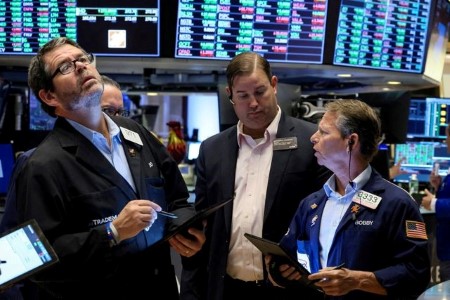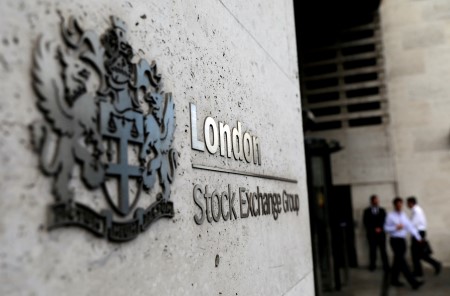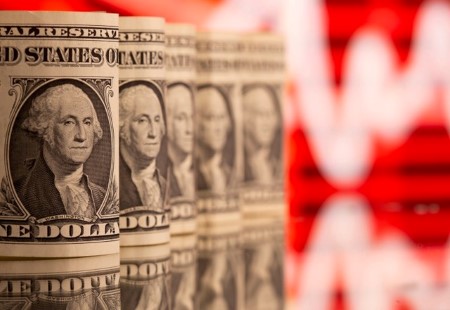LONDON, Oct 14 (Reuters) – British Prime Minister Liz Truss and new finance minister Jeremy Hunt will have to do a lot more than Friday’s U-turn on corporation tax to restore Britain’s credibility with financial markets after three bruising weeks.
Truss and Hunt, a former foreign minister, will be looking to Oct. 31 – the date of the government’s medium-term budget plan announcement – as a moment to win back the trust of investors.
The pound and British government bond prices rose on Thursday and Friday in anticipation of the policy shift, but they retreated after Truss gave a short news conference on Friday, which underwhelmed analysts.
“Undertaking a U-turn that is forced doesn’t really give the impression that Liz Truss is driving forward with a credible policy plan but rather reacting to developments as they unfold, which itself doesn’t engender much confidence,” said Richard McGuire, head of rates strategy at Rabobank in London.
As Truss spoke on Friday gains made in anticipation of the corporation tax U-turn faded.
Ten-year gilt yields were 40 bps above session lows hit earlier on Friday, also pushed up by moves in bond yields globally. This puts them some 80 bps above their levels before the government’s mini-budget on Sept. 23 that triggered the recent turmoil.
The pound fell more than 1% against the dollar and remains 0.6% below its pre-Sept. 23 levels.
Investors and analysts said the reinstating of a previously scheduled corporate tax hike did little to resolve the challenges the “mini-budget” had originally introduced.
Paul Dales, chief UK economist at Capital Economics, called Friday’s move a “mini-U-turn,” noting there were still 25 billion pounds (USD 28.07 billion) of unfunded tax cuts remaining, down from 45 billion pounds in the original plan.
Without further changes the Office for Budget Responsibility – Britain’s fiscal watchdog – will say a 43-billion-pound hole in the public finances will need to be filled to put the debt-to-GDP ratio on a falling path in three years, he estimated.
Focus also turned to growing political instability with the fourth finance minister in as many months appointed in a country grappling with a cost-of-living crisis, and some questioned how long Truss herself could stay in office.
“Markets are potentially seeking out a hard reset back to square one. Like we’ve seen in Greece and Italy, the market can force a change of leadership if necessary,” said Janus Henderson portfolio manager Bethany Payne.
UNDERWHELMED
Britain’s mini-budget three weeks ago triggered some of the biggest ever jumps in British bond yields, exposed vulnerabilities in the pensions sector — undermining the country’s financial stability.
Sterling, already hurt by a strong dollar, fell to record lows, creating another headache for the Bank of England which is has accelerated the pace of its interest rate increases in a bid to tackle an inflation rate running at nearly 10%.
The BoE was also forced to carry out a round of emergency bond-buying which ended on Friday, leaving many investors anxious about what might happen next week.
“These sudden changes of policy both from the government and the central bank raise uncertainty for market participants potentially stalling or deterring investment, which has been weakening since Brexit,” said Ken Egan, director of European sovereign credit at Kroll Bond Rating Agency.
“How it impacts liquidity on the gilt market going forward is something we are monitoring closely.”
Nomura said sterling’s decline was unlikely to slow until economic growth rebounds. It forecasts a fall in sterling to USD 0.975 by year-end. The pound was trading at around USD 1.1191 and is already down 17% against the dollar this year.
NatWest Markets also suggested Friday’s announcement would do little to tame gilt yields. A roughly 20 billion-pound reduction in funding needs over the next two years — Friday’s measures are expected to raise 18 billion pounds — would be worth only 30 bps off the 10-year gilt yield, which has already been more than priced in, its economists said.
Rabobank’s McGuire said pressure on UK assets could lead the BoE to re-intervene in the bond market or delay its quantitative tightening, bond-selling plans.
Investors may need more reassurance, especially given the scale of Britain’s six-month, 60 billion-pound energy support package, fund managers said.
“Thus far, the investment community has been underwhelmed by the move on corporation tax and is looking for a more substantive ‘U-Turn’ in order to restore fiscal credibility,” said Mark Dowding, chief investment officer at BlueBay Asset Management.
“A windfall tax to reduce the cost of the energy price cap will be required along with further steps,” he added.
(USD 1 = 0.8908 pounds)
(Reporting by Yoruk Bahceli, Dhara Ranasinghe, Nell Mackenzie, Harry Robertson, Editing by William Schomberg and Jane Merriman)







 DOWNLOAD
DOWNLOAD











